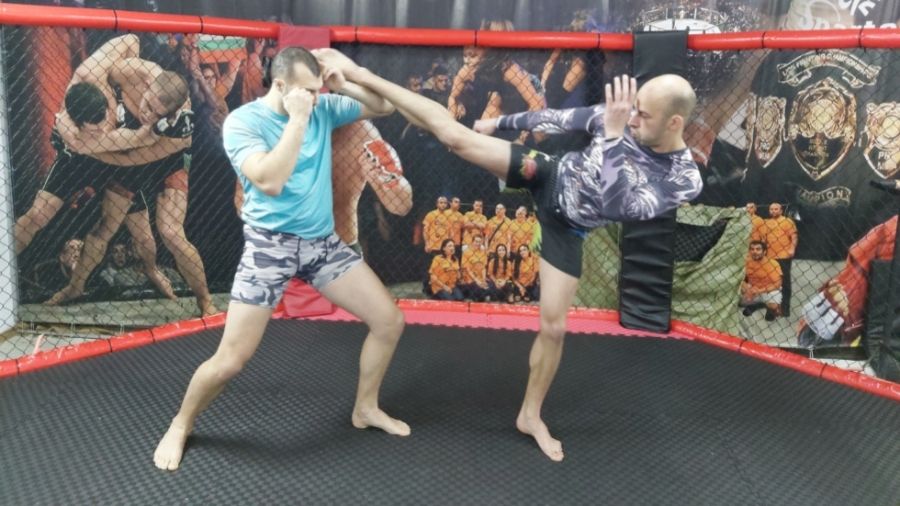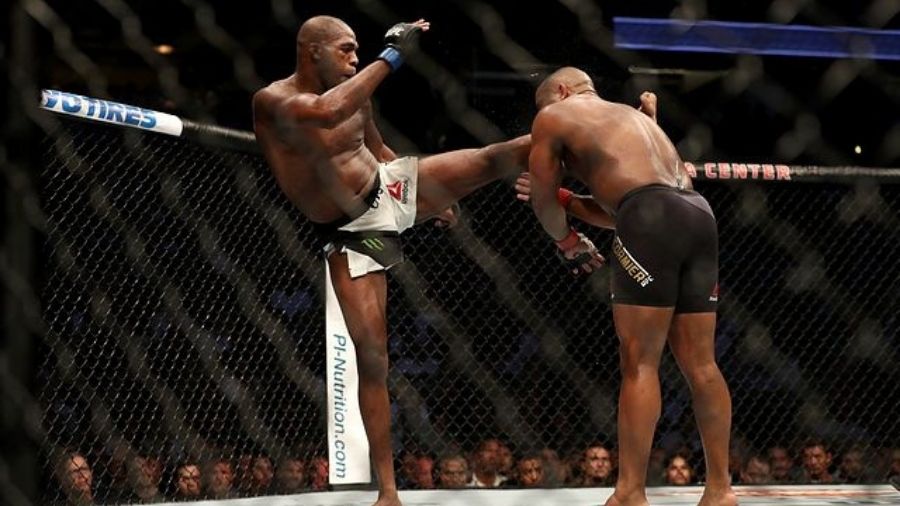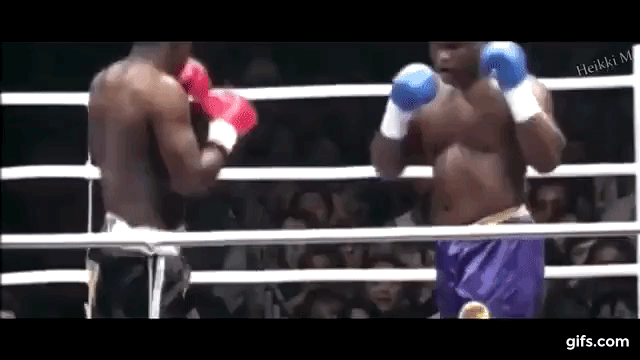Head kicks are one of the most devastating strikes you can throw in a fight and are responsible for numerous highlight-reel knockouts across MMA, kickboxing, and Muay Thai. The head kick is so strong that it may very well cause a knockout even if it’s partially blocked. A shin to the chin can instantly switch off the brain. Learning to throw a head kick will not be the first kicking technique you learn.
The head kick is done with the same mechanics as every other roundhouse kick – with a pivot on the support leg and a rotation of the entire body ending with a kick. However, the head kick requires some flexibility and the correct technique.
Read on to learn how to throw a head kick, how to prepare your body for kicking, and how to increase the chances of landing.
How To Kick Head Height
Throwing a head kick is different from kicking the legs or the body. You will need to learn the proper roundhouse technique, but it should be no surprise that you also need some flexibility to kick head height. If you are stiff and your leg barely reaches the head with an effort, there is no point in head kicking. Even if you manage to land to the head, the kick will have no power.
There are two types of flexibility that you must first build. These are static flexibility and dynamic flexibility.
Discover The Little Known Secrets For Unlocking Devastating KO Power!
Heavy hands are built doing these things...
Static flexibility is what you probably imagine when you hear flexibility. There are many stretches, but the most important one is the good old split. Jean Claude Van Dame didn’t do the splits because they looked cool. The splits are the perfect stretch for the roundhouse kick that opens up the hip and loosens up the muscles and tendons. Another great static stretch is the seated straddle.
Static stretching will not be enough to develop all the attributes needed for the head kick. Dynamic stretching is essential because, after all, the kick is a dynamic movement. Start with leg swings.
Get near a wall, support yourself with one hand and start swinging your leg forward. After going for about a minute on both legs, switch to side swings, which will fire up the muscles responsible for the high kick.
Don’t go straight to the high kicks at the beginning of every session. Gradually warm up the body by first kicking low and mid-height. This way, you will minimize the chance of injury. See Bangkok Trainer of the Year Steve Pipe’s step-by-step guide “How To Kick Higher” so you can throw head kick knockouts!
How To Throw A Head Kick
After you’ve warmed up nicely and built up some flexibility, it’s finally time to kick to the head. Different martial arts have different interpretations of the high kick. Still, the Muay Thai version is the most powerful, effective, and easy to do, and it has become the “standard” kick in modern-day combat sports. Here is how to do it:
- From a neutral stance, transfer your weight on the balls of your front foot and start pivoting.
- Chamber the back leg and rotate your body around the front foot until the knee points to the opponent.
- Extend the leg and kick, aiming at the chin.
- Your rear hand can be extended towards the opponent or swung down to build more momentum. The other hand is kept tight to the head.

The key to all roundhouse kicks is the pivot. The kick’s power comes from the rotation of the body around the base foot. At the endpoint, the heel of the support leg should point to the opponent. The Muay Thai/kickboxing kick is used like swinging a bat, attempting to kick through the target.
The trajectory of the head kick is upwards as opposed to the body kick, which travels parallel to the ground, and the leg kick is done with a chopping downwards motion. Once you are proficient with the technique and have flexible hips, you can start throwing the head kick horizontally, which will make it harder to block.
It’s best to land the head kick with the lower portion of the shin, but sometimes the range is not suitable for that. The instep is also perfectly capable of inflicting heavy damage.
If the kick is blocked, the danger of injury is lower. Contrary to body kicks where you can hit an elbow, or the leg kick where a good check can hurt the kicker badly, the head kick is much safer in this regard.
There are a couple of details you can utilize to increase the range and height of your head kicks. The first thing is to go higher on the ball of the foot. Just extend the base foot more, and you will kick higher.
The second move is made by simply leaning back with the body, which will bring your hip higher. Leaning is an excellent option for people who are not that flexible.
How To Set Up A Head Kick
Land Some Low Kicks First
The first setup is not a combination, but it’s about conditioning your opponent to expect a particular attack and then surprise him with another attack. Start by throwing a few leg and body kicks.
The opponent will start anticipating them, bring his hands down to block, and then you can launch a high kick with a much better chance of landing.
A high-level example of this is the second fight between Jon Jones and Daniel Cormier. Jones kicked Cormier’s body dozens of times over three rounds. Cormier reached down to block with his head completely open when he finally kicked high.

Lead Hand Punch-Rear High Kick
The lead hand punch turns the body, loading up the rear head kick. The fundamental way to do it is with a jab. The left hook works even better because it pins down the opponent and sends his bodyweight toward the kick.
The best option is to kick the head after a left hook to the body. Not only do you prepare the head kick with the things mentioned above, but the body shot will likely cause the opponent to lower his guard and body position, thus opening the head.
All these can be done with single lead hand shots or combinations that finish with a lead hook to the body or the head.

Rear Straight-Head Kick
A staple of southpaw fighters, the rear cross followed almost immediately by a head kick is a devastating combination. This combination may seem counterintuitive at first, but in fact, it’s easy to execute and hard to block.
The punch is often used to mask the incoming kick right behind it, not to do damage. The hand blinds the opponent and engages his attention, and the kick is thrown right behind the punch. The key to landing this is not to return the hand and then kick, but to do the two strikes almost simultaneously.
Another great option is to punch with a rear straight to the body, then kick to the head. Again, kick right after you throw the punch.
Summary
Learning how to throw a head kick requires developing your flexibility by doing some static and dynamic stretches. Drilling the proper technique and learning to set up the head kick will add a true knockout technique to your game.

